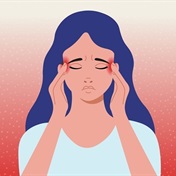Many people with chronic headaches believe that weather changes trigger their woes.
Turns out they may be right, suggest new research findings.
In a study of 25 children and teenagers with migraines or chronic tension-type headaches, researchers found that symptoms tended to flare up on days when it rained or when humidity was higher than normal.
Overall, study participants were nearly three times more likely to have a headache when it was raining or humidity was higher than average, compared with drier conditions, according to findings published in the journal Headache.
Conflicting conclusions
People who suffer migraines or other types of debilitating headaches commonly cite weather changes as one of the triggers. But studies on the matter have come to conflicting conclusions.
For the current study, researchers gave children handheld computers to record their headache symptoms in "real time" over two weeks. They then compared that information with weather data the researchers gathered using weather-tracking software.
This is an improvement over most past studies, which have used less- precise methods, according to the researchers, led by Dr Mark Connelly of Children's Mercy Hospitals and Clinics in the US.
Symptoms rise when raining
Overall, the researchers found that during periods of rain, kids in their study had a 59% probability of reporting headache symptoms. That compared with a 21% probability at rain-free times.
Similarly, the odds of headache symptoms were 58% when humidity was higher than average - versus 22% when humidity levels were average.
"Results of the present study," Connelly's team writes, "lend some support to the belief commonly held by children with recurrent headaches that weather changes may contribute to headache onset."
No good explanation
Exactly why rain and humidity would trigger headaches in some children is not clear. Nor do the findings necessarily mean that other weather variables are unimportant.
One recent study of 7,000 patients with severe migraine or non-migraine headaches found that the risk of symptoms climbed on days when the temperature rose or barometric pressure dropped.
Low barometric pressure generally means cloudy skies and storms; in the current study, however, there was no specific link between headache symptoms and barometric pressure changes.
More research is needed to understand how weather variables may affect people's headache symptoms, according to Connelly and his colleagues.
It also remains to be seen how such knowledge could be practically useful for patients, the researchers conclude. - (Reuters Health, January 2010)
SOURCE: Headache, December 21, 2009.




 Publications
Publications
 Partners
Partners














